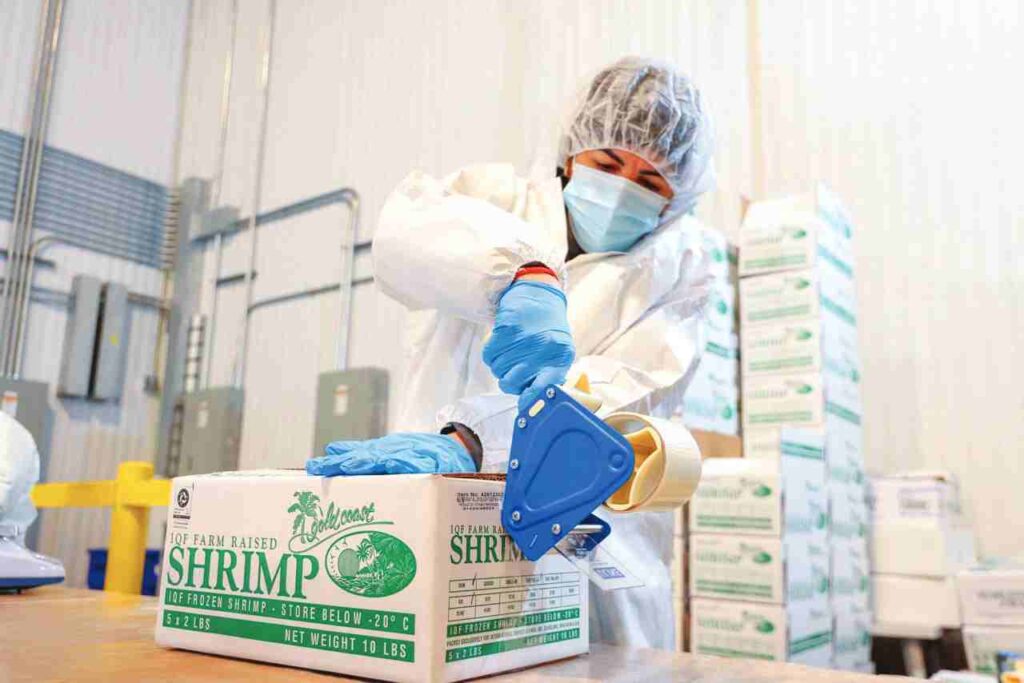
The seafood industry faces unique challenges in maintaining product quality and safety due to its perishable nature. Ensuring stringent temperature control and hygiene throughout the transportation process is critical to prevent spoilage and contamination. Sarfraz Ahmad Khan, VP-Operations, Snowman Logistics Ltd shares with Clean India Journal, the specific measures for safeguarding the integrity of seafood during transit, from meticulous cleaning and sanitization of cold vans to sophisticated digital tracking systems and adherence to stringent regulatory standards

“Snowman Logistics employs advanced temperature-controlled logistics solutions to maintain the quality and hygiene of seafood during transportation.”
Sarfraz Ahmad Khan
How does Snowman Logistics ensure temperature control and hygiene are maintained throughout the seafood transportation process?
Advanced temperature-controlled logistics solutions ensure quality and hygiene of seafood in transportation, like multi-temperature warehouses and specialized vehicles to make sure of optimal temperatures. Seafood is typically kept between 0°C-4°C for chilled storage and -18°C or below for frozen storage. The FIFO (First In, First Out) principles in hygiene protocols maintains freshness. Monitoring of operations is 24/7 via a centralized command centre for compliance with quality, safety standards.
What are the cleaning and sanitization protocols for cold vans, to prevent cross-contamination?
Cleaning, sanitization measures for cold vans are crucial to prevent cross-contamination in the transportation phase. Standard practices include:
• Regular cleaning schedule (cold vans cleaned, sanitized after every trip or delivery) including washing interior surfaces with food-safe cleaning agents to reduce residues and contaminants
• Approved disinfectants used, tested for effectiveness against bacteria, viruses, fungi
• Temperature monitoring in the vans, regular inspection to prevent microbial growth
• Product segregation done to avoid cross-contamination, seafood, meat and dairy sent in separate compartments or different trips
• Drivers and handlers are trained in hygiene practices, wearing gloves and clean uniforms to minimize contamination risks
• Documentation and audits of the cleaning and sanitization process, to ensure compliance with industry standards.
What precautions are taken during loading & unloading, besides transit to maintain seafood hygiene?
Workers involved in loading/unloading are trained in hygiene practices such as wearing gloves, hairnets, clean uniforms, to minimize contamination. Equipment such as forklifts, pallets and containers are sanitized before use. Seafood is packed in insulated, leak-proof containers during handling and transit. Automated systems or careful manual handling reduces the risk of physical damage and contamination.
What regulatory standards and certifications are followed at Snowman Logistics for food safety?
Compliance with the Food Safety and Standards Authority of India (FSSAI) regulations in food safety management is priority. ISO 22000 certification ensures that food safety management systems we follow meet international standards. ISO 14001 certification for environmental management, eco-friendly practices is the focus. At specific locations, we hold the British Retail Consortium (BRC) certification, a global standard for food safety. We are approved by the Export Inspection Agency (EIA), valuable for handling export-quality food products.
What digital tracking or monitoring systems are used to maintain hygiene and temperature compliance?
We use advanced digital tracking and monitoring systems, these include Telematics Systems (vehicles equipped with telematics for real-time tracking of temperature and location), Centralized Command Center (a 24/7 monitoring of storage chambers, vehicles temperatures across our network). ERP-Driven Operations (Enterprise Resource Planning systems to manage inventory, orders, shipments to ensuring traceability, compliance with hygiene standards).
Snowman Logistics have installed Internet of Things sensors in warehouses, transportation vehicles to track temperature and humidity. All processes including cleaning, sanitization and temperature checks are documented digitally for compliance audits.
Managing spoilage incidents and minimizing environmental impact:
Real-time monitoring: Advanced tracking systems detect temperature deviations early, allowing for immediate corrective actions.
Segregation and Disposal: Spoiled goods are promptly segregated and disposed of in compliance with environmental regulations.
Root Cause Analysis: Each incident is analysed to identify and address the issues, ensuring improvement.
Eco-friendly Refrigerants: We use environmentally sustainable refrigerants in their cold storage facilities and vehicles.
Energy Efficiency: Energy-efficient equipment and renewable energy sources utilized.
Waste Management: Strict waste management protocols are followed, including recycling and safe disposal of packaging materials.
Regular Sanitization: All equipment and storage areas are sanitized regularly to prevent contamination.
Training Programs: Hygiene practices and environmental sustainability training
for staff.
 CIJConnect Bot-enabled WhatsApp
CIJConnect Bot-enabled WhatsApp









